Table of Contents
Introduction:
Effective coaching models can be beneficial to motivate employees, boost productivity and morale, as well as create a more positive and open company culture.
Quality coaching and mentoring are often at the heart of many success stories in any career or business. Every coach has their own unique approach, but there are strategies anyone can learn to become a better motivator and mentor.
Coaching has emerged as a powerful catalyst for personal and professional development, providing individuals with the guidance and support needed to navigate the complexities of life and achieve their aspirations. In this comprehensive guide, we will delve into the intricate world of coaching, focusing on the pivotal role it plays in goal setting and achievement for clients and the various Coaching Models that are available to work with.
Section 1: Foundational Concepts in Coaching Models
Coaching, as a discipline, is built upon foundational concepts that form the bedrock of effective coaching practice. Understanding these concepts is essential for coaches to navigate the dynamic and evolving landscape of the coaching relationship.
1.1 Defining Coaching Models
At its core, coaching models provide a structured framework for the coaching process. They serve as guides, helping coaches navigate the complexities of individual growth and goal achievement. These models are not rigid templates but flexible frameworks that can be adapted to the unique needs of each client. They provide a systematic approach to addressing challenges, fostering self-discovery, and promoting sustainable change.
Understanding the historical development of coaching models is crucial for appreciating their evolution. From early mentorship traditions to modern coaching standards, the journey reflects the dynamic nature of the coaching profession. Today, coaching models draw from psychology, positive behavioral science, and organizational development, reflecting a holistic understanding of human potential.
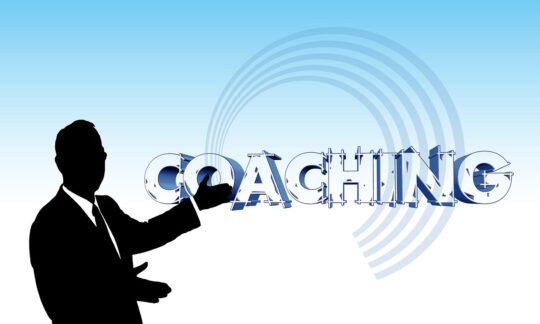
1.2 Common Elements in Coaching Models
While coaching models may differ in structure and emphasis, they share common elements that contribute to their effectiveness. Goal-setting, self-awareness, action planning, and accountability are recurrent themes woven into the fabric of coaching models. These shared elements create a cohesive and comprehensive approach to personal and professional development.
The emphasis on goal-setting reflects the forward-looking nature of coaching, where clients are encouraged to articulate and pursue their aspirations. Self-awareness serves as the cornerstone, guiding clients to explore their values, beliefs, and strengths. Action planning translates insights into tangible steps, fostering a sense of agency and progress. Accountability ensures that clients remain committed to their journey, promoting sustained efforts towards their goals.
1.3 Adaptability and Customization
One of the distinguishing features of coaching models is their adaptability. Coaches recognize that each client is a unique individual with distinct needs, motivations, and learning styles. Therefore, coaching models are not one-size-fits-all solutions but rather flexible frameworks that can be tailored to meet the specific requirements of the client.
Customization is a dynamic process that involves aligning coaching interventions with the client’s personality, preferences, and context. Successful coaches adeptly navigate this customization process, drawing from various coaching models and techniques to create a personalized roadmap for each client. This adaptability not only enhances the relevance of coaching but also empowers clients to take ownership of their development journey.
In essence, the foundational concepts in coaching models underscore the client-centric nature of coaching. It is about recognizing the uniqueness of each individual, understanding the shared elements that contribute to growth, and employing flexible frameworks that resonate with the diverse aspirations of those seeking coaching guidance. As we delve into specific coaching models, these foundational concepts will serve as a lens through which we explore their intricacies and applications in empowering clients towards transformative change.
Section 2: The GROW Model
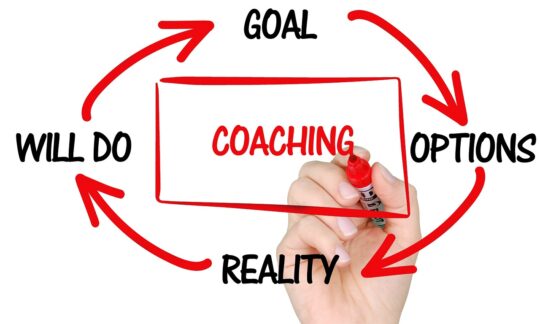
The GROW model, developed by Sir John Whitmore, stands as a prominent and widely adopted coaching framework. This section will provide a comprehensive exploration of its intricacies, delving into each phase and elucidating the underlying principles that contribute to its effectiveness.
2.1 Overview
The GROW model, acronymic for Goals, Reality, Options, and Wrap-up, serves as a roadmap for structuring coaching conversations. Its simplicity belies its profound impact, offering a systematic approach to goal-setting and problem-solving. The GROW model operates on the premise that individuals inherently possess the resources needed to achieve their goals, and coaching serves as a catalyst to unlock and channel those resources effectively.
2.2 Goal Setting in GROW
The first phase, Goals, sets the foundation for the entire coaching journey. This involves collaboratively defining and clarifying the client’s objectives. Effective goal-setting within the GROW model aligns with the SMART criteria (Specific, Measurable, Achievable, Relevant, Time-bound). Coaches play a pivotal role in facilitating a deep exploration of the client’s aspirations, ensuring that goals are not only clear but also resonate with the client’s values and passions.
This phase is not a mere listing of objectives; rather, it involves a process of uncovering the deeper motivations and desires that underpin the client’s stated goals. The coach assists in refining and articulating these aspirations, setting the stage for a focused and purposeful coaching journey.
2.3 Reality
The second phase, Reality, serves as a reality check and an honest assessment of the client’s current situation. Coaches employ active listening and powerful questioning techniques to guide clients in objectively examining their present circumstances. This involves exploring strengths, challenges, and the external factors influencing the client’s journey.
The Reality phase is not about dwelling on limitations but gaining a clear understanding of the starting point. It lays the groundwork for informed decision-making in subsequent stages and fosters a realistic perspective on the client’s capabilities and challenges.
2.4 Options
In the Options phase, the coach collaborates with the client to generate a spectrum of possibilities for achieving the defined goals. This stage encourages creativity and divergent thinking, fostering an environment where clients feel empowered to explore alternative paths.
Coaches may employ various techniques, such as brainstorming and mind mapping, to expand the range of options. The emphasis is on cultivating a mindset that transcends traditional thinking, allowing clients to discover innovative solutions and approaches.
2.5 Wrap-up
The final phase, Wrap-up, consolidates the insights and decisions made throughout the coaching journey. Coaches facilitate a reflective process where clients summarize key takeaways, articulate action steps, and establish accountability measures. This phase serves as a bridge between the coaching conversation and the client’s ongoing journey towards goal achievement.
The Wrap-up phase also provides an opportunity to celebrate successes, acknowledge progress, and address any lingering concerns. It reinforces the client’s agency and commitment to their goals, leaving them equipped with a sense of purpose and direction beyond the coaching session.
In essence, the GROW model’s strength lies in its simplicity and versatility. It provides a structured yet adaptable framework that resonates with clients across diverse contexts. As we dissect each phase, it becomes evident that the GROW model is not a one-size-fits-all solution but a dynamic tool that, when wielded skillfully, empowers individuals to unlock their potential and navigate the path to success.
Section 3: The ICF Core Competencies Model
The International Coach Federation (ICF) Core Competencies Model stands as a cornerstone in the coaching profession, providing a comprehensive framework that outlines the skills, attitudes, and behaviors essential for effective coaching. This section delves into the nuances of the ICF Core Competencies, shedding light on how they shape the coaching process.

3.1 Introduction to ICF
The International Coach Federation, founded in 1995, is a global organization dedicated to setting high standards for the coaching profession. The ICF Core Competencies, established by the organization, serve as a benchmark for professional coaches worldwide. These competencies are categorized into four clusters: Setting the Foundation, Co-creating the Relationship, Communicating Effectively, and Facilitating Learning and Results.
3.2 Ethical Guidelines
One of the foundational aspects of the ICF Core Competencies is the emphasis on ethical guidelines. Coaches are expected to uphold the highest standards of integrity, honesty, and professionalism. This involves maintaining confidentiality, establishing clear agreements with clients, and being transparent about coaching methodologies and potential conflicts of interest.
Ethical considerations extend to the coach-client relationship, emphasizing the well-being and autonomy of the client. Coaches navigate the delicate balance of providing support while avoiding dependency, ensuring that clients make informed decisions aligned with their values.
3.3 Active Listening and Powerful Questioning
Two pivotal competencies within the ICF model are active listening and powerful questioning. Active listening involves fully attending to the client, not just to their words but also to their emotions, tone, and non-verbal cues. Coaches use reflective listening techniques to mirror and clarify the client’s thoughts, fostering a deeper understanding.
Powerful questioning, another cornerstone, involves the art of asking open-ended questions that prompt reflection and exploration. Coaches use questions to evoke insights, challenge assumptions, and guide clients toward self-discovery. The goal is to stimulate critical thinking and help clients articulate their goals and aspirations with clarity.
3.4 Coaching Presence
Coaching Presence is a competency that embodies the coach’s ability to be fully present with the client. It goes beyond physical presence and involves being attuned to the client’s emotions, energy, and context. A coach with a strong coaching presence creates a safe and supportive space for the client to explore, learn, and grow.
This competency requires the coach to be flexible and responsive, adapting to the client’s needs and the evolving coaching dynamic. A strong coaching presence not only fosters trust but also allows the coach to pick up on subtleties and nuances that may be crucial to the coaching process.
3.5 Direct Communication
Direct Communication is the competency that focuses on clear and effective communication. Coaches are encouraged to communicate directly and succinctly while being mindful of the client’s preferences and sensitivities. This involves providing feedback, offering observations, and making requests that contribute to the client’s awareness and progress.
Direct communication is a delicate balance between being forthright and compassionate. Coaches use language that is impactful yet respectful, fostering an environment where the client feels supported in their journey while being challenged to stretch beyond their comfort zone.
In essence, the ICF Core Competencies Model underscores the multifaceted nature of effective coaching. By weaving together ethical considerations, active listening, powerful questioning, coaching presence, and direct communication, coaches equipped with this model are poised to guide clients through a transformative journey of self-discovery, growth, and achievement.
Section 4: Goal Setting Techniques in Coaching
In the realm of coaching, goal setting serves as a cornerstone for guiding clients toward their desired outcomes. This section delves into the intricacies of goal setting within coaching, exploring techniques employed by coaches to refine, articulate, and achieve meaningful goals with their clients.
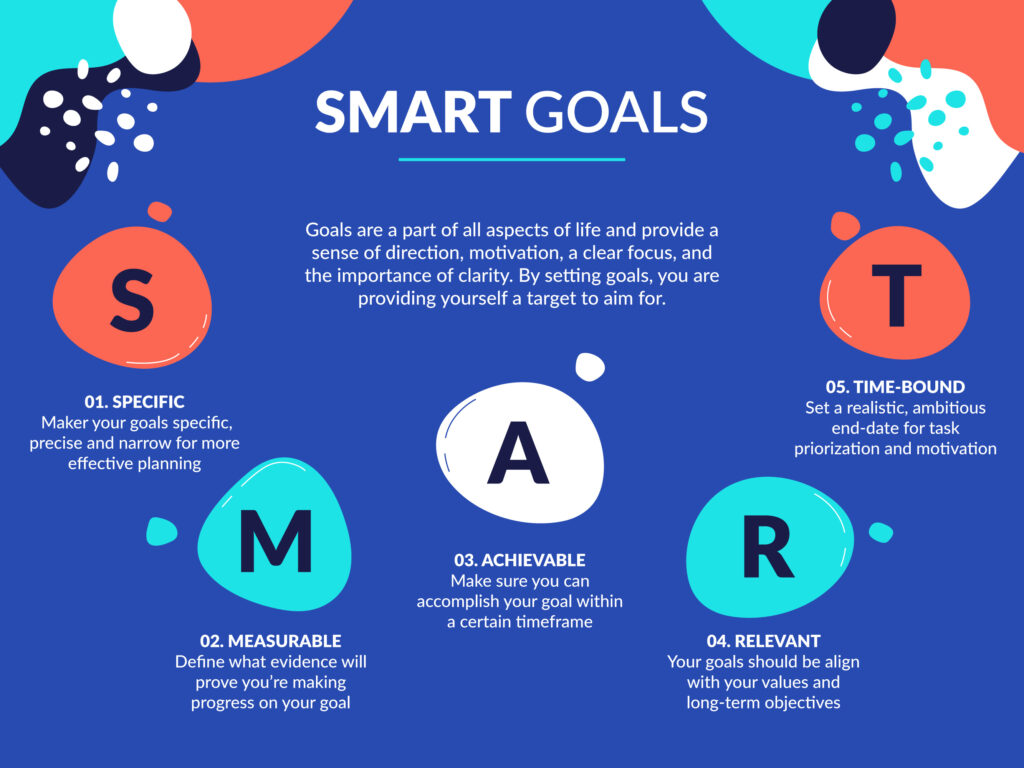
4.1 SMART Goals
At the heart of effective goal setting in coaching is the SMART criteria, which stands for Specific, Measurable, Achievable, Relevant, and Time-bound. Coaches work collaboratively with clients to transform broad aspirations into clear and well-defined objectives.
- Specific: Goals are articulated with precision, outlining exactly what the client aims to achieve. This clarity eliminates ambiguity and provides a focused direction for the coaching journey.
- Measurable: Coaches help clients define criteria for measuring progress and success. This involves identifying tangible indicators that demonstrate movement toward the goal.
- Achievable: Goals are set within the realm of feasibility, considering the client’s resources, capabilities, and constraints. Coaches guide clients to set objectives that are challenging yet attainable.
- Relevant:The relevance of a goal to the client’s overall vision and values is crucial. Coaches ensure that goals align with the client’s aspirations and contribute meaningfully to their personal or professional growth.
- Time-bound: Goals are anchored within a specific timeframe, creating a sense of urgency and accountability. This temporal dimension adds structure to the goal-setting process.
4.2 Visualization and Affirmations
Beyond the structured SMART criteria, coaches often integrate visualization and positive affirmations into the goal-setting process. Visualization involves mentally picturing the successful attainment of a goal, creating a vivid mental image of the desired outcome. Coaches guide clients in using this technique to enhance motivation and cultivate a positive mindset.
Affirmations are positive statements that clients repeat to themselves to reinforce positive beliefs and attitudes. Coaches assist clients in crafting affirmations that resonate with their goals, reinforcing a constructive and optimistic outlook.
4.3 Action Planning
While goal setting provides a clear destination, action planning charts the course to reach that destination. Coaches collaborate with clients to break down overarching goals into actionable steps. Action planning involves identifying specific tasks, setting priorities, and establishing a timeline for implementation.
Coaches help clients anticipate potential obstacles and develop contingency plans. This proactive approach ensures that clients are well-prepared to navigate challenges on their path to goal achievement.
4.4 Overcoming Obstacles
Goal setting is not without its challenges, and coaches play a crucial role in helping clients overcome obstacles and setbacks. Coaches guide clients in identifying potential barriers, reframing limiting beliefs, and developing resilience in the face of challenges.
The emphasis is on cultivating a growth mindset that views setbacks as learning opportunities. Coaches assist clients in adjusting goals when necessary, ensuring that the overall vision remains intact even in the face of unexpected detours.
In essence, Section 4 underscores the multifaceted nature of goal setting within coaching. From the precision of SMART criteria to the power of visualization and affirmations, coaches employ a diverse set of techniques to make goal setting a dynamic and empowering process. The integration of action planning and resilience-building ensures that clients not only set meaningful goals but also embark on a journey equipped with the tools and mindset needed to achieve them.
Section 5: The Inner Game Coaching Model
The Inner Game Coaching Model, founded by Timothy Gallwey, introduces a unique and profound perspective on coaching by delving into the dynamics of self-awareness and performance. This section explores the key principles and concepts underlying the Inner Game, shedding light on its transformative potential in coaching.
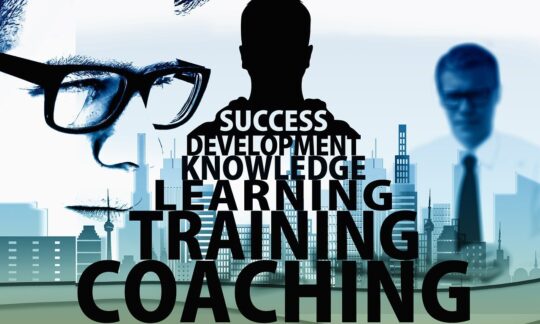
5.1 Timothy Gallwey’s Inner Game Concept
Timothy Gallwey’s Inner Game philosophy originates from his experiences in coaching tennis players. In his groundbreaking book “The Inner Game of Tennis,” Gallwey introduced the idea that there are two “selves” within an individual—the critical, analytical Self-1 and the intuitive, capable Self-2. The Inner Game Coaching Model extends this concept to various aspects of life, emphasizing the role of self-awareness in optimizing performance.
5.2 Self-1 and Self-2 Dynamics
Central to the Inner Game Coaching Model is the understanding of the dynamics between Self-1 and Self-2. Self-1 represents the critical, judgmental mind that often interferes with optimal performance. It is the source of self-doubt, overthinking, and the imposition of external standards. On the other hand, Self-2 embodies the intuitive, capable self that possesses the inherent skills and abilities required for success.
The coaching process within the Inner Game model involves helping clients recognize the dominance of Self-1 and facilitating a shift towards greater alignment with Self-2. This shift allows individuals to tap into their natural abilities, promoting a state of “flow” where actions are effortless and performance is optimized.
5.3 Observation without Judgment
A key competency within the Inner Game Coaching Model is the ability to observe without judgment. Coaches guide clients in developing a heightened awareness of their thoughts and actions, fostering a non-critical observation of their own performance. This process involves acknowledging self-limiting beliefs and patterns without assigning blame or criticism.
Observation without judgment creates a space for clients to explore their behaviors objectively. It enables them to recognize patterns that may hinder their progress and, importantly, opens the door for self-correction and improvement.
5.4 Techniques for Coaches
Coaches employing the Inner Game model utilize specific techniques to facilitate the shift from Self-1 to Self-2 dominance. Visualization exercises, mindfulness practices, and focused attention on the present moment are instrumental in cultivating self-awareness and promoting optimal performance.
The coach’s role is to guide clients through experiential exercises that help them transcend self-imposed limitations. These exercises often involve activities that encourage clients to trust their instincts, embrace mistakes as learning opportunities, and develop a heightened awareness of the mind-body connection.
5.5 Empowering Clients for Optimal Performance
The ultimate goal of the Inner Game Coaching Model is to empower clients for optimal performance by unlocking their natural potential. Coaches help clients cultivate a mindset that fosters self-trust, resilience, and a focus on the process rather than the outcome.
Through a combination of self-awareness techniques, mindfulness practices, and experiential exercises, clients gain the tools to overcome performance barriers. The Inner Game Coaching Model is not merely about achieving external success but about fostering an internal transformation that transcends performance in various life domains.
In conclusion, the Inner Game Coaching Model offers a profound approach to coaching by addressing the core dynamics of self-awareness and performance. By guiding clients in recognizing and overcoming the influence of the critical mind, coaches employing this model facilitate a transformative journey towards unlocking untapped potential and achieving sustainable success.
Section 6: Neuro-Linguistic Programming (NLP) in Coaching
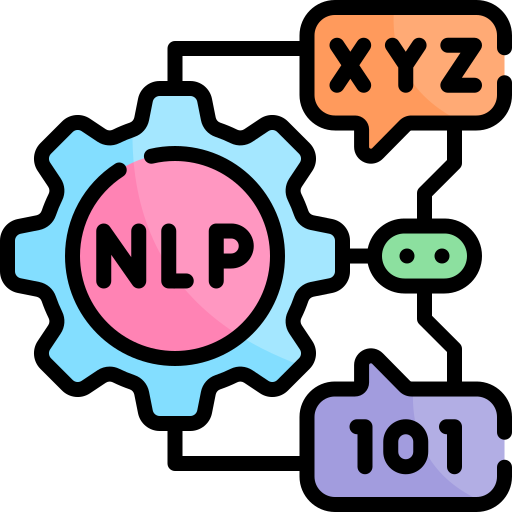
Neuro-Linguistic Programming (NLP) has emerged as a powerful and versatile approach within the coaching realm, focusing on the intricate connection between thoughts, language, and behavior. This section delves deeper into the principles and techniques of NLP, exploring how they can be applied to enhance the coaching process.
6.1 Introduction to NLP
Neuro-Linguistic Programming, developed by Richard Bandler and John Grinder in the 1970s, is founded on the belief that there is a connection between neurological processes, language, and behavioral patterns learned through experience. In coaching, NLP serves as a toolkit for understanding and reshaping the cognitive and linguistic aspects of human behavior to achieve specific goals.
6.2 Anchoring and Reframing
Two fundamental techniques within NLP that significantly impact coaching are anchoring and reframing. Anchoring involves associating a specific emotional state with a particular stimulus, such as a touch or a word. Coaches use anchoring to help clients access positive states when needed, fostering confidence and motivation.
Reframing, on the other hand, is the process of changing the meaning of a situation by shifting perspectives. In coaching, reframing helps clients reinterpret challenges, turning them into opportunities for growth. By altering the framing of experiences, clients can change their emotional responses and behaviors.
6.3 Meta-Model and Milton Model
NLP introduces two linguistic models, the Meta-Model and the Milton Model, which play a crucial role in communication within coaching.
- Meta-Model: This model focuses on precision in communication by identifying and challenging limiting language patterns. Coaches use the Meta-Model to uncover underlying beliefs, assumptions, and generalizations, encouraging clients to express themselves more clearly and facilitating deeper self-reflection.
- Milton Model: In contrast, the Milton Model utilizes artful vagueness and open-ended language to create possibilities and encourage exploration. Coaches leverage the Milton Model to facilitate a client’s creative thinking, allowing for a broader range of perspectives and solutions.
6.4 Techniques for Coaches
Coaches trained in NLP employ a variety of techniques to enhance their coaching effectiveness:
- Mirroring and Matching: Coaches may mirror and match the client’s non-verbal communication, such as posture, gestures, and tone of voice. This establishes rapport and a sense of connection, fostering a more open and trusting coaching relationship.
- Language Patterns: Coaches proficient in NLP use language patterns that align with the client’s preferred mode of processing information. By adapting their communication style, coaches can better connect with clients and facilitate more impactful coaching conversations.
- Timeline Techniques: NLP incorporates timeline techniques to explore how individuals represent and organize their experiences over time. Coaches use these techniques to help clients gain insights into their past, present, and future perspectives, facilitating goal-setting and personal development.
6.5 Integrating NLP into Coaching
Integrating NLP into coaching requires a nuanced understanding of the client’s language patterns, cognitive processes, and preferred sensory modalities. Coaches trained in NLP often blend these techniques seamlessly into their coaching sessions, creating a more holistic and personalized approach to client development.
In essence, NLP in coaching empowers individuals to understand and reshape their cognitive patterns, linguistic habits, and behavioral responses. By leveraging the principles and techniques of NLP, coaches can guide clients towards transformative shifts in mindset, communication, and overall effectiveness in pursuing their goals.
Section 7: Integrative Approaches and Emerging Models
Coaching, as a dynamic field, often benefits from integrative approaches that draw from multiple models to address the nuanced needs of clients. This section explores the advantages of integrating different coaching models and delves into emerging trends that shape the future of coaching.
7.1 Integration of Multiple Models
The integration of multiple coaching models allows coaches to create a tailored and comprehensive approach for their clients. Rather than adhering strictly to one model, coaches adept in integration can draw on the strengths of various models to address the multifaceted nature of individual growth.
Integration is not a random amalgamation of techniques but a thoughtful and strategic blending of elements from different models. For example, a coach might combine the goal-setting clarity of the GROW model with the self-awareness emphasis of the ICF Core Competencies. This integrative approach offers a nuanced and holistic coaching experience, catering to the diverse needs and preferences of clients.
Case studies highlighting successful integrative approaches provide insights into the flexibility and adaptability required for coaches to navigate the unique challenges clients bring to coaching sessions. Whether it’s combining solution-focused techniques with NLP or incorporating elements of the Inner Game into a strengths-based coaching approach, the integration of multiple models enhances the coach’s toolkit and amplifies the impact on clients.
7.2 Emerging Models in Coaching
As coaching evolves, new and innovative models continue to emerge, reflecting advances in psychology, neuroscience, and technology. These emerging models often push the boundaries of traditional coaching, incorporating cutting-edge approaches to address contemporary challenges.
AI-Powered Coaching: The integration of artificial intelligence (AI) and coaching is a rapidly growing trend. AI-powered coaching platforms leverage machine learning algorithms to provide personalized insights, track progress, and offer timely interventions. These platforms can analyze vast amounts of data to enhance goal-setting, feedback, and accountability.
Cultural Sensitivity in Coaching: With an increasingly diverse global client base, coaching models are evolving to emphasize cultural competence. Coaches are recognizing the importance of understanding and respecting the cultural context of their clients. This involves adapting coaching techniques to align with different cultural norms, values, and communication styles.
Positive Psychology Integration: Positive psychology principles are gaining prominence in coaching models. Integrating elements from positive psychology enhances the focus on strengths, resilience, and well-being. Coaches incorporating positive psychology may guide clients in cultivating a positive mindset, fostering gratitude, and building habits that contribute to overall life satisfaction.
7.3 Continuous Professional Development for Coaches
The future of coaching is intricately linked with the ongoing professional development of coaches. As coaching models evolve and new approaches emerge, coaches must engage in continuous learning to stay abreast of industry trends and best practices.
Professional development encompasses advanced training in established coaching models, exposure to emerging trends, and the acquisition of specialized skills such as virtual coaching techniques and AI integration. Coaching organizations, certifications, and collaborative communities play a crucial role in supporting coaches on their journey of continuous learning.
In conclusion, the integration of multiple coaching models, the emergence of innovative approaches, and the commitment to continuous professional development collectively shape the landscape of coaching. Coaches who embrace flexibility, stay informed about emerging trends, and adapt their methodologies to suit the evolving needs of their clients are best positioned to thrive in this dynamic and transformative field.
Conclusion
In the intricate tapestry of coaching, where the threads of various models are woven together, a holistic and transformative journey unfolds. As we conclude this exploration into the diverse realms of coaching models, it becomes evident that coaching is not a one-size-fits-all endeavor. Instead, it is a dynamic and adaptable process that draws on foundational concepts, leverages established models, and integrates emerging trends to empower individuals on their paths to self-discovery and achievement.
Foundational concepts underscore the client-centric essence of coaching. It is about recognizing the unique strengths, challenges, and aspirations of each individual. The common elements, adaptability, and customization inherent in coaching models provide the scaffolding for a personalized and impactful coaching experience.
The GROW model, with its straightforward yet potent structure, exemplifies the power of goal-setting, reality exploration, option generation, and wrap-up for goal achievement. The ICF Core Competencies Model, with its ethical guidelines, active listening, powerful questioning, coaching presence, and direct communication, sets the standard for professional coaching practice.
The Inner Game Coaching Model, rooted in the dynamics between Self-1 and Self-2, offers a profound understanding of self-awareness and performance optimization. Neuro-Linguistic Programming (NLP), with its anchoring, reframing, and language patterns, delves into the intricate connection between thoughts, language, and behavior, providing coaches with a rich toolkit for enhancing communication and fostering change.
The integration of multiple coaching models allows for a nuanced and flexible approach that caters to the diverse needs of clients. By blending elements from various models, coaches create a personalized roadmap for clients, acknowledging that each individual’s journey is unique. Emerging trends, such as AI-powered coaching, cultural sensitivity, and positive psychology integration, highlight the evolving landscape of coaching, where technology, diversity, and well-being play integral roles.
Continuous professional development emerges as a linchpin for coaches navigating this dynamic field. As coaching evolves, staying informed about emerging models, integrating technological advancements, and honing cultural competence become essential aspects of a coach’s journey towards mastery.
In this ever-evolving landscape, coaching stands as a transformative force, empowering individuals to overcome challenges, unlock potential, and achieve their goals. The convergence of foundational concepts, established models, integration strategies, and emerging trends creates a rich and vibrant tapestry that reflects the complexity and beauty of the coaching profession. As coaches and clients engage in this collaborative journey of growth, the threads of understanding, adaptability, and continuous learning weave together to create a narrative of empowerment and transformation.
Want to know more on the below topics, read through:


Leave a Reply